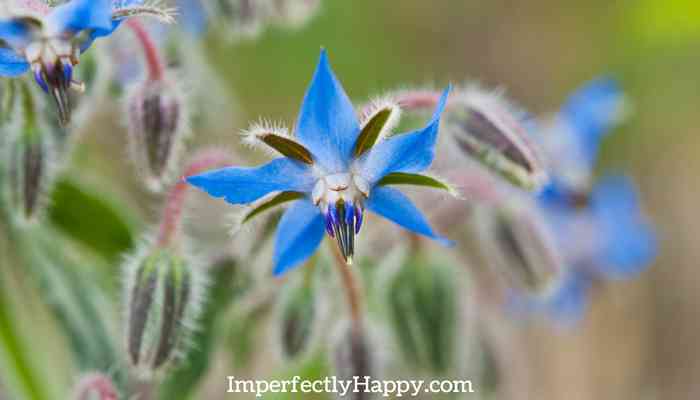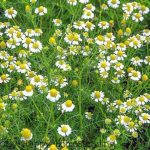Growing Borage may be the single best thing you do for your home and garden this year! Growing Borage is fairly easy and it is a powerful herb for healing and companion planting. And if that isn’t reason enough, growing Borage adds a touch of whimsy and beauty to any garden. It never fails to attract friends and family that wander out to my garden. I want to show you how to grow Borage, without it taking over; and using it effectively for your home, health and garden.
 Growing Borage For Home Health and Garden
Growing Borage For Home Health and Garden
How to Grow Borage…wait what is Borage?
Borage is an herbal plant with bright blue flowers. This Mediterranean native herb also sometimes called a starflower, bee bush or bee bread. It is used in medicinal purposes as well as many garden uses.
Growing Borage For Your Garden
Not only is Borage a beautiful addition to your garden it has some muscle too. Borage is an excellent companion plant. It didn’t get the name bee bush for nothing…it will attract bees as well as other beneficial bugs. As gardeners we know how important pollinators are to our garden! It is known to repel tomato worms (aka the green devils) and cabbage moths as well. If that wasn’t enough, when planted with your squash it can improve their flavor.
Top 10 Plants for Companion Planting
Growing Borage For Your Home
- Add the flowers to your potpourri
- Use the flowers to garnish your summer salads
- Cook the young Borage leaves like you would spinach or use them in your salads – they have a familiar cucumberish flavor.
- Freeze the flowers in ice cubes to use in your summer drinks.
- Us the flowers to decorate cakes and candies
15 Borage Cooking & Recipe Ideas
Growing Borage For Your Health
Borage has been used in medicinal purposes since, at least, the ancient Romans.
- Flowers and leaves have been used to treat depression, coughs and fevers
- The oil made from Borage seeds is said to help with skin issues, arthritis, PMS, diabetes and ADHD
- The leaves, dried and infused like tea, can be relaxing and sedating; helping with sleep disorders and anxiety.
- Diuretic
As with any medicinal uses, check with a health care provider before using. A good herbalist can advise you on how to use Borage properly. I highly recommend learning how to use herbs medicinally with the Herbal Academy!
It should be noted that the Borage plant contains elements that can damage the liver. This is not common because most people aren’t using Borage in their daily diet. But again, something to research before using it. Check out Web MD’s information on Borage.
How to Grow Borage – What You Need to Know Before You Get Started
Borage is an annual herb that prefers the warmer seasons. You’ll want to sow your Borage seeds after the last frost; the soil should be  warm. Borage does not transplant easily so it is better to start it where you want it to end up. You can plant Borage in a pot but make sure to give it plenty of room from the get-go (remember transplanting is nearly impossible). It also self-seeds and is considered easy to grow.
warm. Borage does not transplant easily so it is better to start it where you want it to end up. You can plant Borage in a pot but make sure to give it plenty of room from the get-go (remember transplanting is nearly impossible). It also self-seeds and is considered easy to grow.
You’ll want to choose a area in your garden that gets full sun, at least part of the day. Borage will grow in partial shade but it prefers the sunlight. Borage does well in poor soils; in fact it loves sandy soils. While Borage loves a regular watering, be careful not to over-water. Borage can handle drought conditions.
As for harvesting your lovely blue flowers. I prefer to pull when the flowers are open but not faded. But I have heard a few people say that you should pull the flowers before the open to retain full potency and color. So dabble and see what you like best.
It is best to start your Borage from seeds, I get my Borage seeds from Seeds Now!
I know you’re going to love growing Borage in your garden, and the bees will thank you too!
 Growing Borage For Home Health and Garden
Growing Borage For Home Health and Garden



